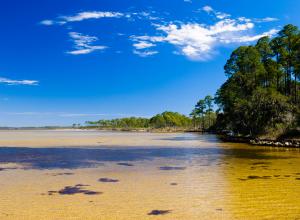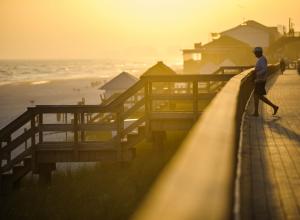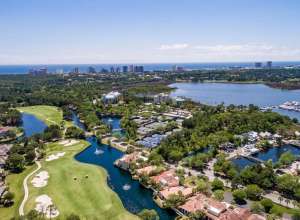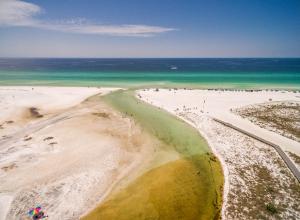Story
The Importance of Seaweed to Our Ecosystem
July 20, 2012 by SoWal Staff

Whether seaweed is present on the beach or not is on one of the most frequently asked questions on the SoWal Forum for folks coming to visit. Here's a little info about seaweed from our partner, the South Walton TDC.
______
Seaweed can be an issue along our beaches during certain times of the year. Though June is historically the month of greatest seaweed deposits, there is no way to predict when it will wash ashore in larger quantities or how long it will last.
During periods of heavy seaweed deposits, the South Walton TDC is often asked why we don't remove seaweed from our beaches. South Walton is proud to be an eco-friendly destination and we are committed to preserving and protecting our area’s natural beauty and the safety of beachgoers.
To help with those efforts, Walton County requires items to be removed from the beach each evening as part of the Leave No Trace program, and supports the efforts of South Walton Turtle Watch in its mission to protect nesting sea turtles.
The County also supports the natural decomposition of seaweed due to the important role it plays as a naturally-occurring fertilizer and the main source of nutrients for our beach and dune systems. The seaweed also serves to trap and hold sand on the beach which, like sea oats, assists in new dune formation.
The following points will help to answer questions from beachgoers related to seaweed.
- It is Walton County policy to allow seaweed to decompose naturally, as the process provides a food source for coastal birds and helps to shore up the vital dune system. The dunes are not only home to coastal species; they provide the first line of defense in the event of storms.
- South Walton’s commitment to the coastal environment is evidenced in part by the record number of sea turtle nests identified during the 2012 nesting season.
- Though a nuisance, this condition is usually temporary.
- During periods of large seaweed deposits, constant removal would be necessary as it continues to wash ashore throughout the removal process.
- Florida Department of Environmental Protection permits are required for all construction activities located seaward of the dune line. Additionally, all activities that happen during turtle nesting season (May 1- November 31) must be authorized by the U.S. Fish and Wildlife Service and the Florida Fish and Wildlife Coalition. Seaweed removal is considered a construction activity and is typically permitted only in times of emergency. Though seaweed levels may be classified as an inconvenience, rarely would they be characterized as an emergency.
- The Walton County Health Department is the agency responsible for determining when seaweed levels present a health hazard. Should that determination be made, the Walton County TDC has standard operating procedures in place for seaweed removal.
_____
We have two main types of seaweed from time to time. June Grass is the finer variety and looks almost like a fine moss in the water. Sargassum weed is course and harbors a lot of little critters. Next time you see some in the water take a closer look and you're likely to see tiny fish, seahorses, crabs and more hiding in the strands.
If you find yourself stressing about seaweed, try to relax and enjoy all that nature has to offer. Seaweed may not seem ideal but it is perfect for our ecosystem. The changing nature of the beach is its true beauty. Speaking of beauty, a sewaeed mask or massage is very expensive in a spa but free on SoWal beaches!
